Lifestyle
How Eco-Friendly Living is Becoming a Lifestyle Choice in Urban India?

Curious about how sustainability is influencing home buying decisions for people in India? Join us for the discussion as Shray Verma, CEO of Shray Projects, shares his take on this exciting shift.
India’s real estate market is undergoing a noticeable transformation, and at the heart of it is the growing importance of sustainability. What was once a niche concept is now becoming a key consideration for homebuyers, especially among urban millennials and Gen Z. For many, choosing eco-friendly living isn’t just about doing their bit for the environment; it’s becoming a lifestyle choice—one that reflects both their values and their social status.
This shift towards sustainable living can be traced to several factors. With rising concerns about climate change, pollution, and the depletion of natural resources, more people are becoming aware of the impact their homes have on the environment. In densely populated cities like Delhi, where air quality is often hazardous, homebuyers are increasingly prioritizing properties that come equipped with air purification systems and ample green spaces. These features not only promise a healthier living environment but have also started to become a marker of luxury and sophistication. As Shray Verma, CEO of Shray Projects, one of the leading real estate firms in North India, puts it, “Green living is becoming more than just an environmentally conscious decision—it’s now a statement of lifestyle. People are looking for homes that represent their commitment to sustainability, and it’s quickly becoming a key factor in real estate decisions.”
The Appeal of Green Homes
The growing demand for sustainable homes isn’t just a passing trend. As environmental awareness continues to rise, more and more people are actively seeking out homes that minimize their carbon footprint. This is especially true in cities like Pune and Hyderabad, where solar-powered homes and energy-efficient buildings are gaining popularity. But what’s driving this demand? For starters, eco-friendly homes come with long-term savings. Energy-efficient appliances, LED lighting, and solar panels may require an initial investment, but they significantly reduce electricity bills and maintenance costs over time. As Shray explains, “Homebuyers are realizing that while sustainable homes may cost a bit more upfront, the savings in energy costs and the increased value of the property make them a smart investment for the future.”
This shift in preferences can be seen as urban millennials in India consider sustainability features to be one of the top priorities when purchasing a home. Social media has played a huge role in amplifying this trend, with influencers and celebrities showcasing their eco-friendly homes, making green living not just responsible but fashionable too.
In addition to energy savings, green building certifications have become an important factor for buyers looking for eco-friendly properties. Certifications from bodies like the Indian Green Building Council (IGBC) and GRIHA are not only symbols of sustainability but also offer concrete benefits, such as reduced energy consumption and lower operating costs.
“Green building standards have really taken off in India, especially in metro cities,” says Shray. “In places like Bangalore, we’re seeing IGBC-certified buildings offering 20-30% savings in energy costs compared to conventional buildings, and this makes them highly attractive to homebuyers.”
These certifications have become a hallmark of quality in the real estate market, with more developers striving to meet these standards to attract environmentally conscious buyers. In cities like Delhi NCR and Hyderabad, the demand for green-certified buildings has surged, as they offer buyers not only a sustainable lifestyle but also long-term financial benefits.
A Nod to Tradition
While energy efficiency is a crucial aspect of sustainable homes, there’s also a growing emphasis on the materials used in construction. Developers are increasingly opting for sustainable, locally sourced materials, which help reduce the carbon footprint of a building. For instance, in regions like Kerala and Tamil Nadu, bamboo and compressed stabilized earth blocks (CSEB) are being used as eco-friendly alternatives to traditional building materials. “Using local materials not only reduces environmental impact but also reconnects us with India’s rich architectural heritage,” Shray points out. “In luxury eco-resorts in Kerala, bamboo, which was once considered a basic material, is now being used as a premium option for sustainable construction. This not only helps the environment but also supports local economies.”
The Popularity of Green Spaces in Urban Living
Sustainability in real estate isn’t just about the homes themselves; it’s also about how they integrate with the surrounding environment. Urban green spaces have become increasingly important for homebuyers who want to escape the concrete jungle and live closer to nature. In cities like Gurugram, developments like the Biodiversity Park have proven the value of green spaces. Since its opening in 2019, property values in the area have risen by 25-30%, with homebuyers willing to pay a premium for the chance to live near parks and open spaces.
In cities like Mumbai, where space is at a premium, developers are finding innovative ways to incorporate green living into urban spaces. Vertical gardens and rooftop farms are becoming common features in new developments, offering residents the opportunity to grow their own produce or simply enjoy a bit of greenery amidst the city’s hustle and bustle.“In Mumbai, initiatives like ‘Terraces Alive’ have transformed over 100 building rooftops into green spaces, which is not only good for the environment but also improves the quality of life for residents,” he shares.
Smart, Sustainable, and Net-Zero
As the demand for sustainable living grows, the future of Indian real estate is moving toward even more advanced and eco-friendly developments. The next big trend is smart, net-zero buildings that produce as much energy as they consume. One standout example is Mahindra World City in Chennai, which is India’s first integrated township to receive certification under the IGBC Green Cities rating. With smart grids, waste-to-energy plants, and IoT-enabled resource management, it represents the future of real estate in India.
“Net-zero buildings are not just about saving energy; they’re about creating a sustainable living environment that benefits everyone,” Shray says. “These buildings are designed with the future in mind, and they’re becoming more and more attractive to buyers who want to make a positive impact.” In a rapidly urbanizing country like India, sustainable real estate isn’t just a choice—it’s becoming a necessity. As more homebuyers embrace eco-friendly living, it’s clear that the future of real estate will be shaped by sustainability.
Follow us for more @Discultured
Business
France’s Reckoning With Ultra-Fast Fashion: Why Shein Is at the Center of a Larger Conversation?
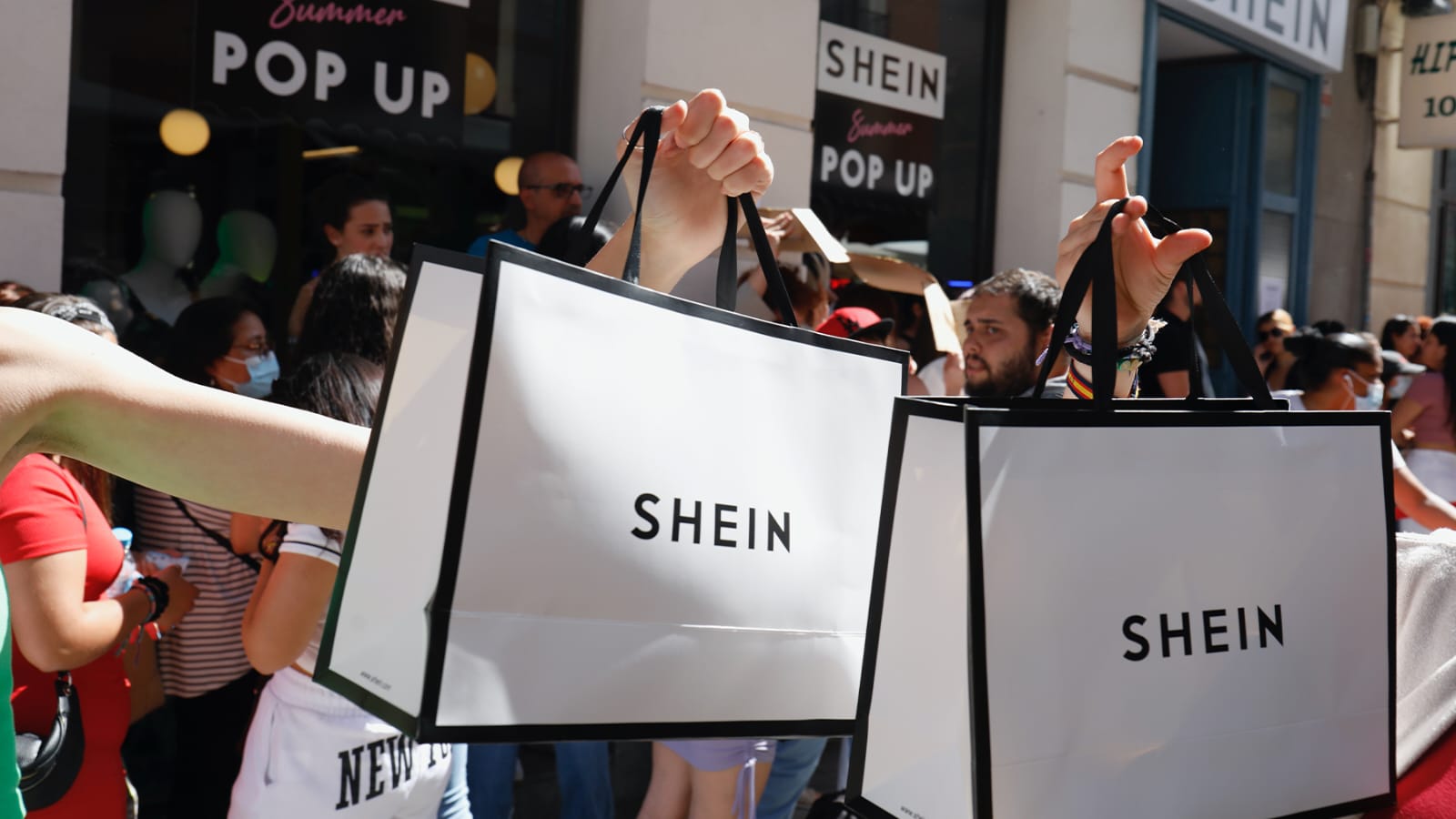
There appears to be a quiet yet undeniable shift underway in how nations are beginning to reckon with the fashion industry, particularly the segment that thrives on speed, relentless volume, and the seductive promise of impossibly low prices. In 2025, France has emerged as one of the first major economies to confront this hyper-accelerated model head-on, not merely by issuing fines or launching investigations, but by challenging the very system that enables it. At the center of this reckoning stands Shein, the Chinese retail juggernaut that has become synonymous with algorithm-driven production. Yet, what makes this moment in France especially significant is not only the legal action being taken against a single company, it is the broader cultural and ethical inquiry being posed. With growing urgency, the country seems to be asking whether we can continue to dress ourselves at this breakneck pace, cloaked in convenience and novelty, without confronting the environmental, human, and psychological costs that are too often obscured by polished interfaces.
€40 Million Fine for Misleading Practices
In July 2025, France’s Directorate General for Competition, Consumer Affairs and Fraud Control (DGCCRF), the country’s principal consumer protection authority, levied a €40 million fine against Shein, marking one of the most high-profile regulatory actions yet against a fast fashion giant. The fine followed an extensive investigation conducted between October 2022 and August 2023, which uncovered a pattern of misleading business practices at the centre of Shein’s digital storefront. More than half of the discounts promoted on its website were found to be deceptive, offering no tangible benefit to the consumer, while others relied on inflated original prices to manufacture the illusion of savings. Even more concerning to regulators were the company’s sustainability claims: bold assurances of a 25% reduction in greenhouse gas emissions and microfiber pollution were, as the DGCCRF concluded, entirely unsubstantiated and unsupported by verifiable data. Though Shein, through its European subsidiary Infinite Style Ecommerce Co Ltd (ISEL), accepted the penalty and claimed to have implemented corrective measures by May 2023, the underlying message from French authorities rang louder than any corporate statement.
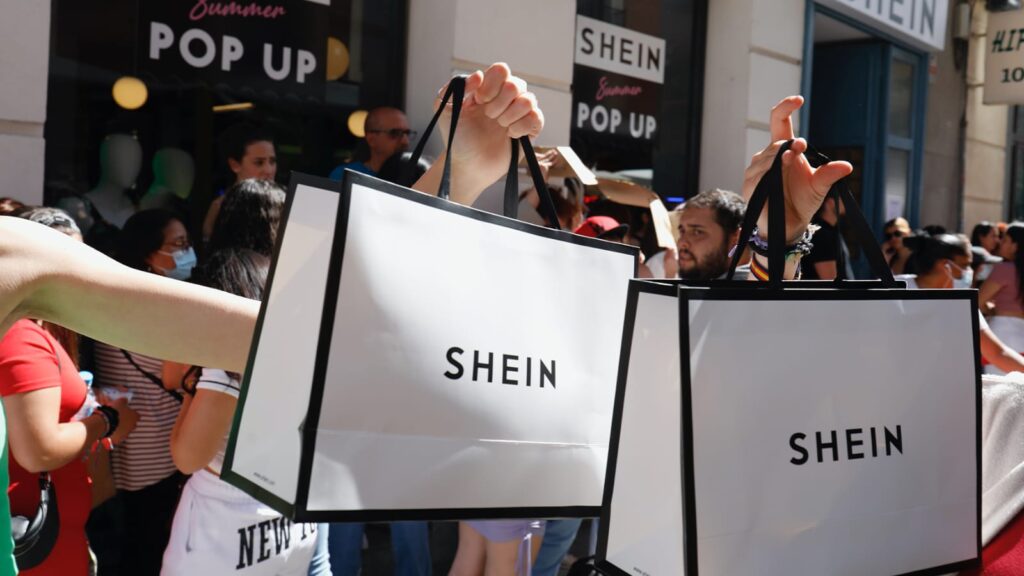
Proposed Legislation Signals a Larger Shift
While the €40 million fine made headlines, it represents just one facet of the mounting scrutiny Shein now faces in France. In June 2025, the French Senate took a more structural approach by passing a groundbreaking bill that, if enacted, could fundamentally alter the way ultra-fast fashion brands operate within the country. At the centre of this proposed legislation is an eco-contribution tax. The bill also lays out stringent new requirements for sustainability reporting, alongside tough advertising regulations that aim to limit visibility for brands that fail to meet clear environmental standards. One of the most notable implications of the legislation lies in its potential to curtail influencer-led marketing strategies, a pillar of customer acquisition for companies like Shein that rely heavily on social media virality and affiliate promotions. Although advocacy groups have raised concerns about a perceived disparity in how European retailers, including Zara and H&M, are being treated under the same regulatory lens, the passage of this bill signals something deeper. It reflects a growing legislative will to confront not just the ecological toll of ultra-fast fashion, but also its broader cultural, ethical, and economic footprint, raising the question of whether the era of unchecked consumerism is nearing its limits.
The Environmental Impact Can’t Be Ignored
One of the driving forces behind the intensified scrutiny Shein now faces lies in the sheer scale of its environmental impact, an impact that reflects not only the brand’s rapid growth but also the systemic problems embedded within the ultra-fast fashion model. The fashion industry as a whole is already responsible for an estimated 10 percent of global carbon emissions, and Shein’s contribution to that figure is anything but marginal. In parallel, French authorities have flagged more than 700 Shein products for failing to adequately disclose environmental risks, particularly those related to microfiber pollution which is an increasingly urgent concern as microplastics continue to infiltrate aquatic ecosystems and public water systems. Beyond environmental violations, the company also remains entangled in serious allegations of labor abuses, including reported connections to forced labor in China’s Xinjiang region, which have only amplified the demand for a more enforceable supply chain transparency. Taken together, these issues have not only galvanized French regulators but are also prompting broader conversations across the European Union about whether the time has come to rein in the unchecked dominance of platforms that have long operated at the intersection of convenience, opacity, and cost-cutting excess.
EU Expands Regulatory Focus on Digital Fashion Platforms
The regulatory pressure mounting against Shein is no longer confined to France alone. The company is now being closely scrutinized at the European level, where its practices are being examined under the framework of the European Union’s Digital Services Act (DSA). In July, French Trade Minister Véronique Louwagie confirmed that formal investigations had been initiated to determine whether Shein is deploying so-called “dark patterns”. These tactics, while not always illegal, are increasingly seen as ethically questionable, especially when used at the scale and speed that Shein commands. The European Commission has already expressed concern over misleading pricing strategies and a general lack of transparency in the platform’s operations, signaling that the company may soon face regulatory consequences that extend well beyond French jurisdiction. What initially began as a case rooted in consumer rights has turned into a far-reaching conversation about digital ethics, platform accountability, and the environmental consequences of unchecked e-commerce, placing Shein at the center of a growing movement to hold digital-first fashion retailers to a higher standard of responsibility.
The Reaction: Divided but Loud
The public reaction to France’s regulatory moves against Shein has been swift, impassioned, and divided, reflecting the complexity of the issues at hand. Many people have welcomed the measures as a long-overdue reckoning for a fashion industry that has long operated in the shadows of overproduction, exploitative labor practices, and environmentally damaging shortcuts. For these voices, the crackdown represents a necessary step toward holding global retailers accountable for the true cost of low-cost fashion. Yet, not everyone sees it that way. Critics of the legislation have expressed concern that such regulations could disproportionately affect low-income consumers, many of whom turn to platforms like Shein for affordable access to clothing and personal expression. Through this lens, Shein can attempt to shift the conversation toward themes of economic inclusion and consumer freedom, portraying itself as a platform that democratizes fashion rather than undermines it. At its core, the debate is about far more than a single company. It is a larger tug-of-war between the urgent need for accountability and the equally pressing question of affordability.
Why This Matters
France’s actions in 2025 are not merely a response to the conduct of a single company but represent a deeper interrogation of the values, compromises, and contradictions that lie at the heart of the global fashion industry. When a country with as much cultural and political influence as France begins to layer financial penalties, proposed eco-taxes, advertising restrictions, and cross-border regulatory cooperation into a cohesive strategy, it signals more than just regulatory intent. It marks the beginning of a broader shift in how we understand fashion’s role in society. The question now is whether brands like Shein will evolve in response to this changing situation or attempt to maintain their dominance through speed, affordability, and mass appeal alone. Just as importantly, it remains to be seen how consumers will react when asked to look beyond the immediate gratification of the checkout page and confront the realities of where, how, and at what cost their garments are made. France may not bring the era of ultra-fast fashion to a halt overnight. But it may well be laying the groundwork for something more enduring.
Also Read: Your Wardrobe Might Be Reflecting a Recession
Follow us for more : Dis_cultured
Fashion
Dupatta Labeled as European Aesthetic is a Case of Cultural Erasure

As the dupatta is rebranded as a “Scandinavian aesthetic,” communities are left questioning whether the globalisation of fashion aesthetics—without proper context—leads to quiet cultural erasure.
In a time when fashion is more global than ever before, cultural crossovers are bound to happen. But when traditional garments are rebranded under trendy, Western labels without proper context or credit, it brings up uncomfortable questions about respect, representation, and recognition. Recently, a new controversy emerged online when social media users pointed out how the dupatta—a piece of clothing that has been a staple in South Asian wardrobes for centuries—was being reimagined as part of a so-called “Scandinavian fit.” Influencers, often white women, began pairing flowing scarves or sheer wraps with minimalistic outfits and tagging them as Nordic-inspired silhouettes. But for many in South Asian communities, this wasn’t innovation but appropriation masquerading as aesthetic.
The dupatta, which holds historical, cultural, and spiritual value across regions in India, Pakistan, and Bangladesh, is not simply a piece of cloth but a marker of identity, modesty, and beauty. So, to see it stripped of its origins and renamed without acknowledgment felt deeply personal to many. This trend, while seemingly harmless to some, touched a nerve because it followed a familiar pattern—the mislabeling or rebranding of cultural elements by those with more power or reach, often for profit or popularity. It reminded people of when “chai” became “chai tea latte” or when henna was sold as “festival face art” without any mention of its roots in South Asian or Middle Eastern cultures.
While some argued that certain flowing garments may have historical connections across Persia or parts of Europe, the very specific rebranding of a garment so central to South Asian culture as “Scandinavian” overlooked its deeply rooted presence in the subcontinent. The issue was not that scarves were being worn but the erasure of origin, the lack of credit, and the tone-deaf celebration of what was being presented as new, when in fact it was ancestral.
This moment reflects a broader, ongoing issue where cultural artifacts—especially those from marginalized or colonized communities—are reinterpreted through a Western lens and marketed without proper understanding. From lehengas being dubbed “Y2K two-piece sets” to bindis being sold as “face jewels” on festival websites, from Maasai beadwork being called “boho chic” to henna being rebranded as “temporary tattoos,” the cycle of cultural erasure repeats itself again and again. And often at the center of this are influencers and fast fashion brands, who chase trends without pausing to research the heritage behind the styles they promote.
On platforms like Shein, one can easily find dupatta-inspired garments being sold as “Ibiza wraps,” completely detached from their original makers—many of whom are Indian artisans who spend months weaving and dyeing these pieces by hand. These knockoffs are cheaper, faster, and trendier—but they come at a cost. The economic impact of this erasure is devastating for communities that rely on craft for livelihood. Maasai artisans lose business as their designs are replicated and mass-produced. Henna artists see their culturally significant work repackaged in plastic kits, marketed to festival-goers. Indian weavers struggle to keep up with global retailers who capitalize on their legacy without crediting it.
But the impact isn’t just economic—it’s emotional too. For many South Asian youth growing up in the diaspora, symbols like the dupatta, the bindi, or mehndi are deeply personal. They are ways to stay connected to a heritage that is already fragile in a world where assimilation is often the price of acceptance. When those symbols are rebranded, repackaged, or dismissed as trends, it can feel like yet another piece of home is being taken away.
Yet, amid all this, social media has also become a place for resistance. While it has played a role in spreading these trends, it has equally empowered people to speak out against them. South Asian creators, fashion historians, and cultural commentators are using social media platforms to call out appropriation, educate their audiences, and reclaim their narratives.
This isn’t a call to stop sharing styles or inspirations—it’s a call to do so with care. Cultural exchange is beautiful when it comes with respect, when credit is given where it’s due, and when the original communities are included, not excluded. The exchange must be reciprocal. It must credit the source, compensate the maker, and respect the context. As fashion continues to globalize, it’s crucial we don’t lose sight of where it all began—and the people who kept it alive.
Also Read: Your Wardrobe Might Be Reflecting a Recession
Follow us for more : Dis_cultured
Fashion
Your Wardrobe Might Be Reflecting a Recession

Here are some fashion trends that have historically reflected economic downturns and are now reappearing in our wardrobes.
In the early 1930s, when the Great Depression took hold, fashion became more practical, and quietly stepped away from glamour. Then, a few decades later, during the oil crisis of the 1970s, something similar happened when people turned to earthy tones, longer skirts, and a more relaxed boho style. And if we look at the recession of 2008, when the world faced another major financial crash, fashion responded yet again with similar trends where loud logos faded, minimalism took over, and people started choosing basics that felt more sensible.

These shifts in style may seem like changing tastes on the surface, but they follow a pattern and that’s no mere coincidence. Fashion, though often seen as frivolous or detached from reality, has always mirrored the social and economic pulse of its time, shifting subtly—or sometimes drastically—in response to the pressures people face. Recession, with its huge impact on spending habits and consumer mindset, has a way of quietly shaping the clothes we wear, the trends we follow, and the statements we choose to make through style. This article explores the fascinating ways in which economic downturns have consistently left their mark on the fashion industry, revealing how style adapts when society is forced to rethink its priorities.
Minimalism and Quiet Luxury

Throughout history, economic downturns have often prompted a return to minimalist fashion, and 2025 is no exception. As recessionary pressures mount, consumers are increasingly drawn to quiet luxury, an aesthetic defined by clean lines, muted tones such as beige, black, and off-white, and logo-free designs that convey sophistication with subtlety rather than flash. This preference stems not only from a desire for elegance but also from practicality: high-quality, versatile pieces offer greater value when budgets are tighter.
This trend isn’t new. After the 2008 financial crisis, Phoebe Philo’s work at Celine became emblematic of the minimalist movement, resonating with audiences seeking calm and refinement in uncertain times. Fast-forward to today, and shows like Succession have reintroduced the concept of quiet luxury into the cultural conversation, highlighting understated affluence over flashy displays of wealth. In 2025, this growing preference also speaks to a broader societal shift that is valuing longevity, subtlety, and authenticity over rapid consumption and conspicuous branding.
Longer Hemlines (The Hemline Index)
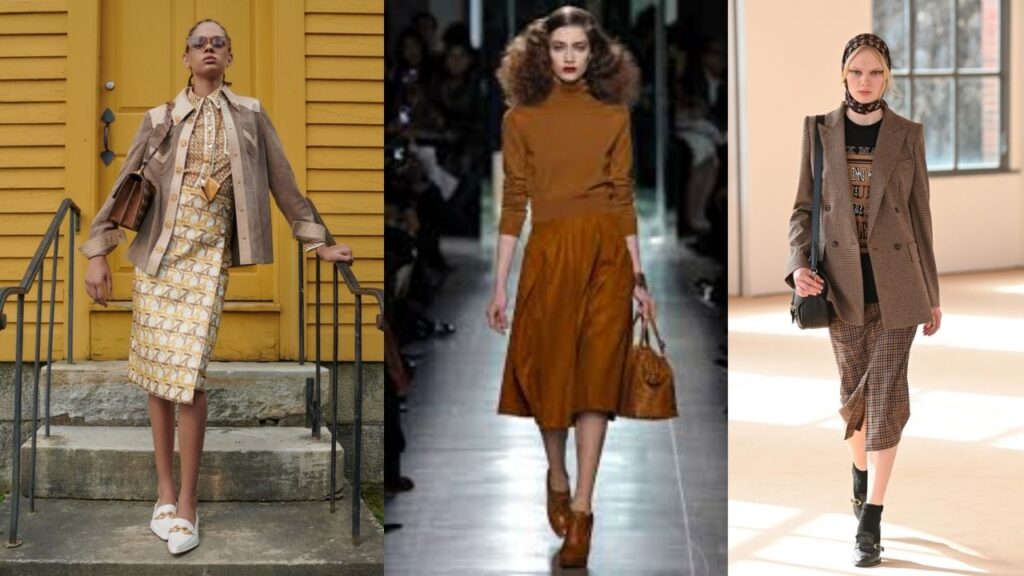
The “hemline index” is a theory suggesting that skirt lengths tend to fall during tough economic times and once again, it appears relevant. Maxi and midi skirts have seen a massive resurgence. Historically, longer hemlines during downturns, such as during the Great Depression and post-2008, reflected a shift toward modesty and practicality. Covered silhouettes offered more versatility and durability, catering to a mood of caution and restraint. While it’s important to note that fashion doesn’t follow the hemline theory religiously (for instance, the prosperous 1950s also favored longer skirts), the broader pattern remains: in times of economic hardship, consumers gravitate toward styles that feel stable, sensible, and enduring.
Indie Sleaze and Nostalgic Revivals
At the other end of the style spectrum, the gritty, chaotic aesthetic of early-2000s “indie sleaze” has roared back to life. Characterized by skinny jeans, distressed layers, slip dresses, messy eyeliner, and an overall DIY spirit, indie sleaze appeals to those longing for a less polished, more rebellious era.
During past downturns, notably post-2008, similar nostalgic trends offered emotional refuge, allowing people to romanticize periods of past turbulence as simpler or freer times. In 2025, cultural moments like Lady Gaga’s punk-era revival in Mayhem have propelled this style back into the spotlight. Indie sleaze’s appeal lies not just in nostalgia but in its affordability and individualism, providing a low-cost way to express personal style amid broader economic anxiety.
Underconsumption-Core and Thrifting
Another major behavioral shift in 2025 is the rise of “underconsumption-core” which is a conscious effort to minimize buying, embrace secondhand shopping, and find new ways to reuse and repurpose existing wardrobes. Social media platforms have become hubs for thrift hauls, “shop your closet” challenges, and DIY upcycling tips.
This trend harks back to post-2008, when resale platforms like Depop and Poshmark flourished. Today’s version is even more value-driven and sustainability-focused, reflecting growing awareness of both economic and environmental crises. Underconsumption-core speaks to a new ethos: style doesn’t have to come at the cost of the planet or one’s wallet. Instead, creativity, resourcefulness, and personal storytelling become the real markers of fashion credibility.
Peplum Tops

Peplum tops, featuring a distinctive flared ruffle at the waist, are another silhouette making a comeback in 2025. Historically, peplums have emerged during or after economic crises, giving a subtle flourish in otherwise streamlined wardrobes. Christian Dior’s iconic New Look post-World War II, with its cinched waists and voluminous skirts, embodied a similar balance between optimism and austerity. Following the 2008 financial crisis, peplum tops once again found favor for their ability to add flair without extravagance. Today, designers like Ashlynn Park are reintroducing them with modern updates like cleaner cuts, lighter fabrics, and a focus on functionality. Their resurgence signals cautious optimism: consumers are ready for a bit of fun in their fashion choices but still value practicality and versatility over flamboyant splurges.
Recession Blonde (and Low-Maintenance Beauty)
The idea of “recession blonde” was coined on TikTok and it reflects the broader beauty shift toward low-maintenance routines in tight economies. Rather than frequent salon visits to maintain a perfect platinum hue, consumers are embracing darker roots, more natural shades, and cost-effective color treatments like glosses.
This mirrors a broader pattern seen after the 2008 crash, when consumers pared back spending on professional beauty services. In 2025, stylists are seeing a surge in requests for “lived-in” color and treatments that extend the time between appointments. It’s a subtle but telling sign of how recessions reshape beauty norms, prioritizing authenticity and affordability over constant upkeep.
Conservative Silhouettes and Muted Colors
Along with longer hemlines, conservative silhouettes including high necklines, long sleeves, and relaxed, layered fits are regaining ground in 2025. Colors, too, are shifting toward muted, earthy palettes like warm browns, charcoal grays, olive greens, and soft neutrals. This isn’t purely aesthetic. Practicality underpins the trend. Muted, conservative pieces tend to mix and match easily, transition across seasons, and outlast fleeting fads, offering greater long-term value. In previous recessions such as the post-1929 crash and post-2008 recovery, similar trends emerged, reflecting a societal mood of prudence and introspection.
Business Casual and Corporate-Inspired Looks
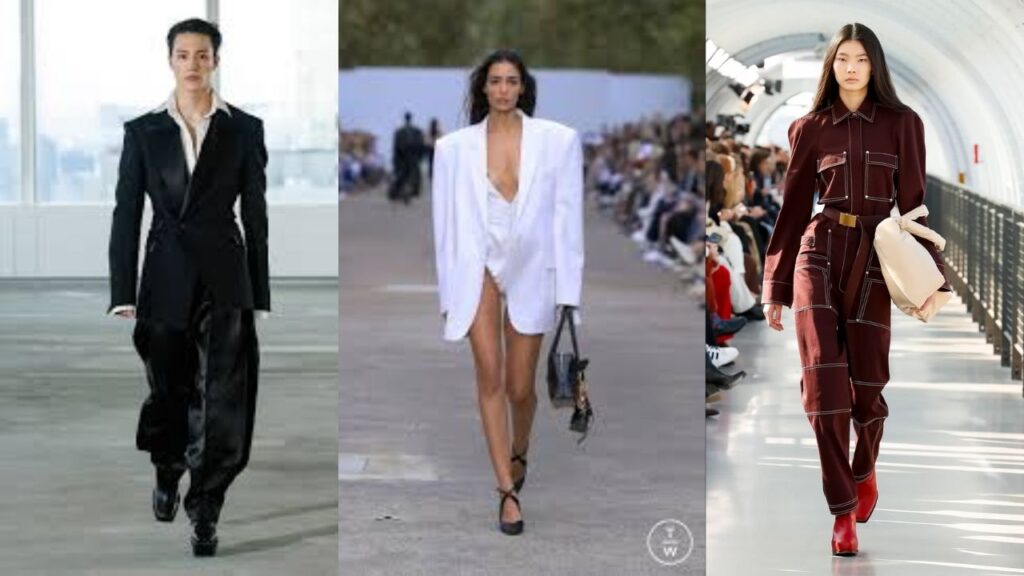
Economic uncertainty also influences how we dress for work and beyond. During recessions, there’s often a resurgence of business casual and corporate-inspired looks, where tailored blazers, wide-leg slacks, crisp shirts, and structured dresses dominate. Dubbed “officecore,” this trend blends professional polish with enough versatility to transition seamlessly from boardrooms to brunches. The early 2010s, following the Great Recession, saw a similar phenomenon, with young adults embracing sharp corporate styles even in nightlife settings. In 2025, designers like Stella McCartney and Peter Do are reviving this spirit but with a twist: reimagining traditional suiting with relaxed cuts, gender-fluid tailoring, and unexpected fabric choices. Officecore today is less about rigid formality and more about smart, adaptable dressing — reflecting a world where professional and personal lives blur, and consumers seek clothing that maximizes both style and function.
High Heels (The High Heel Index)
The so-called “high heel index” is a theory that heel heights rise during the initial stages of economic downturns remains a fascinating, if imperfect, indicator. In the early months of recessions, bold fashion statements, including dramatic heels, sometimes flourish as acts of sartorial defiance or escapism. This was observed at the onset of the Great Depression, though as hardships deepened, comfort and pragmatism took hold.
Also Read: The Questionable Use of the Idea of Feminism as a Marketing Ploy Across History
Follow us for more : Dis_cultured
-

 Events10 months ago
Events10 months agoThe Most Memorable Highlights from the 2025 Academy Awards
-
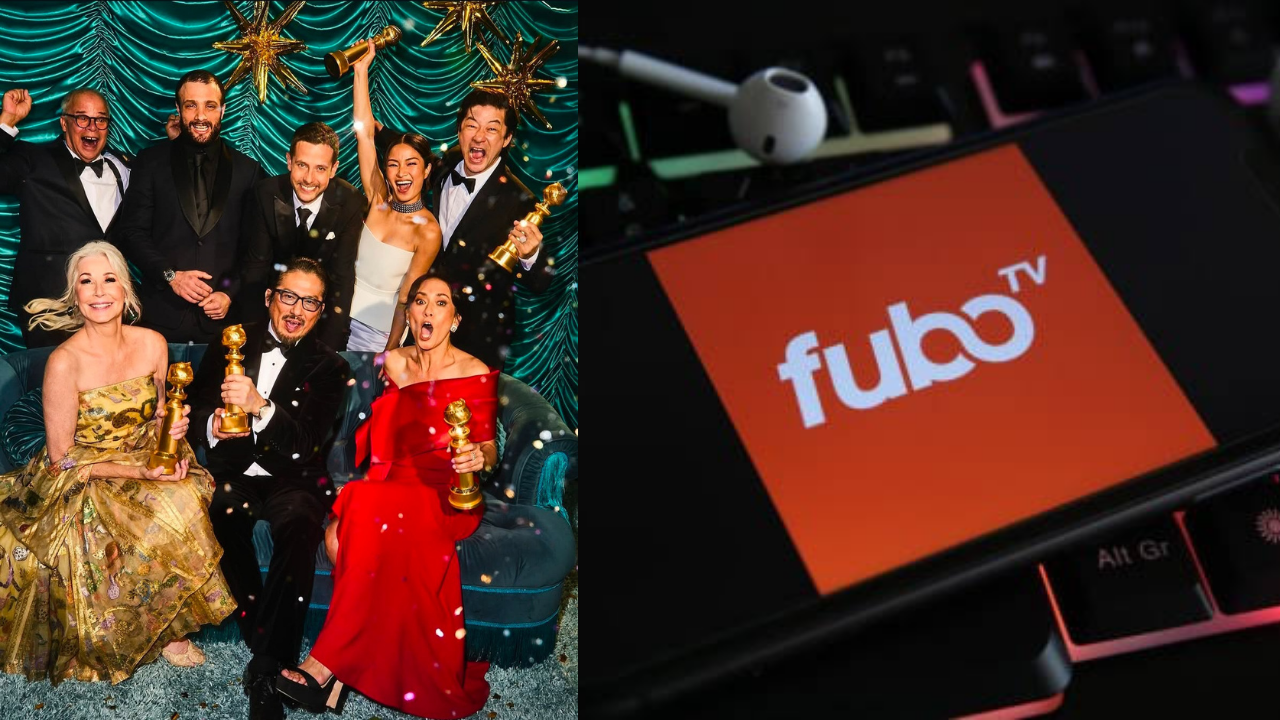
 Events11 months ago
Events11 months agoWeekly Pop Culture Recap: Talkworthy Highlights from the 82nd Golden Globes Awards, Disney’s Merger with FuboTV and Much More
-

 Fashion8 months ago
Fashion8 months agoYour Wardrobe Might Be Reflecting a Recession
-

 Social11 months ago
Social11 months agoMeta Phases Out Fact-Checking and Adopts a Community-Driven Approach similar to X
-

 Events7 months ago
Events7 months agoWhat Indian Celebrities Wore to the Met Gala 2025
-

 Fashion8 months ago
Fashion8 months agoDupatta Labeled as European Aesthetic is a Case of Cultural Erasure
-

 Events7 months ago
Events7 months agoThe Biggest Moments for Indian Cinema at Cannes 2025 That Had Everyone Talking
-

 Fashion9 months ago
Fashion9 months agoWeekly Pop Culture Recap: Donatella Versace has resigned as Versace’s Chief Creative Officer, BLACKPINK’s Lisa is branching out with her graphic novel, ALTER-EGO.









Pingback: National Food Awards 2024: Celebrating the heart and soul of Indian food culture - Discultured